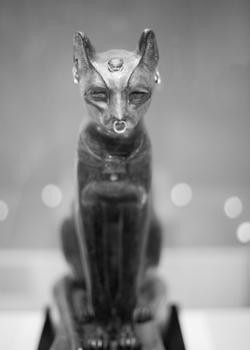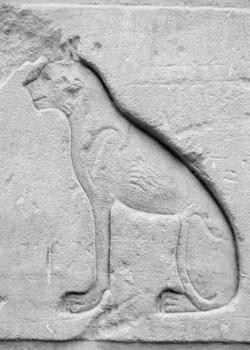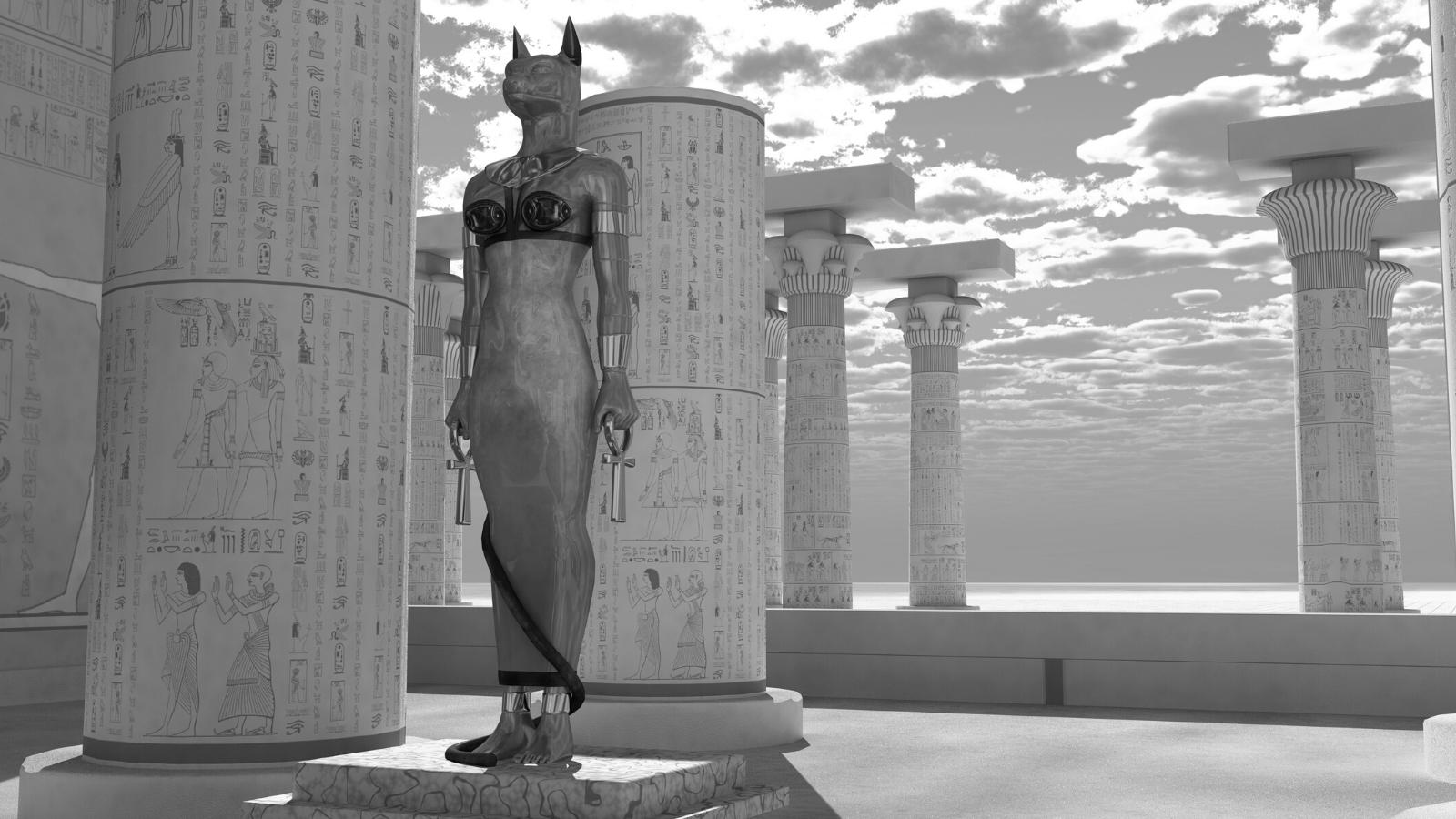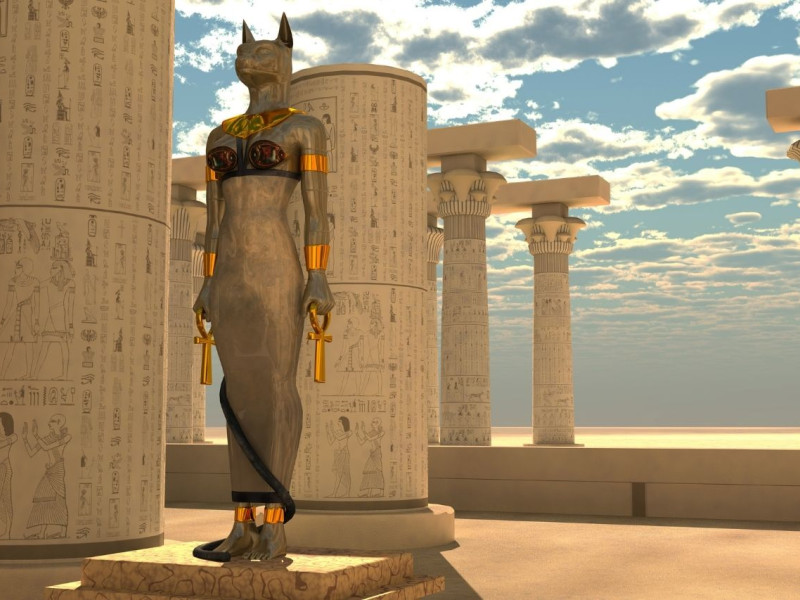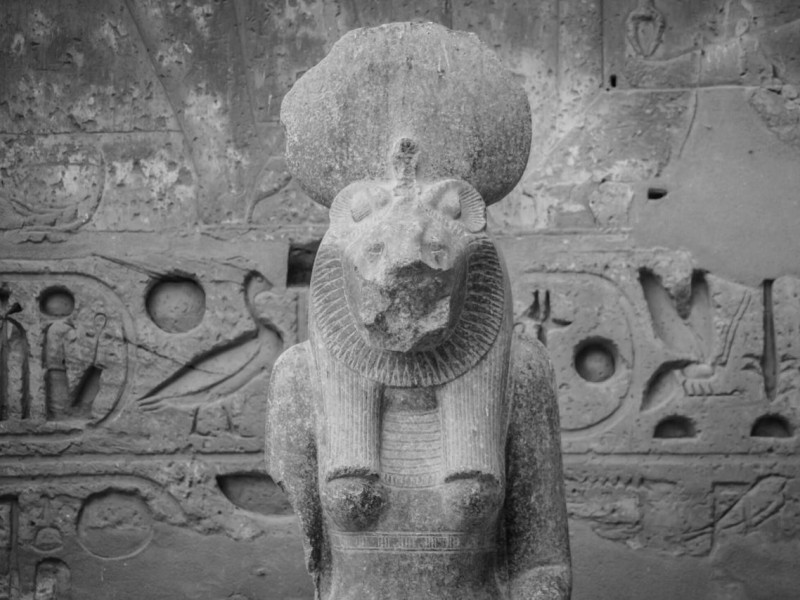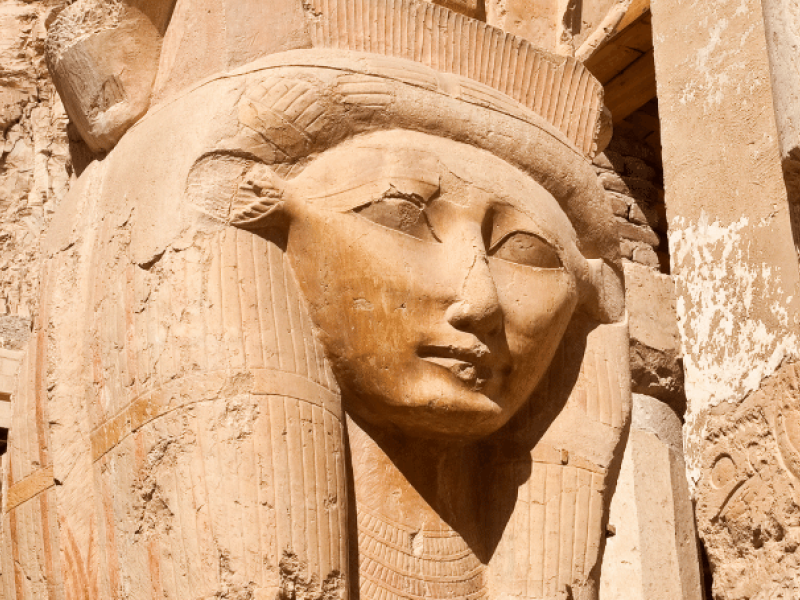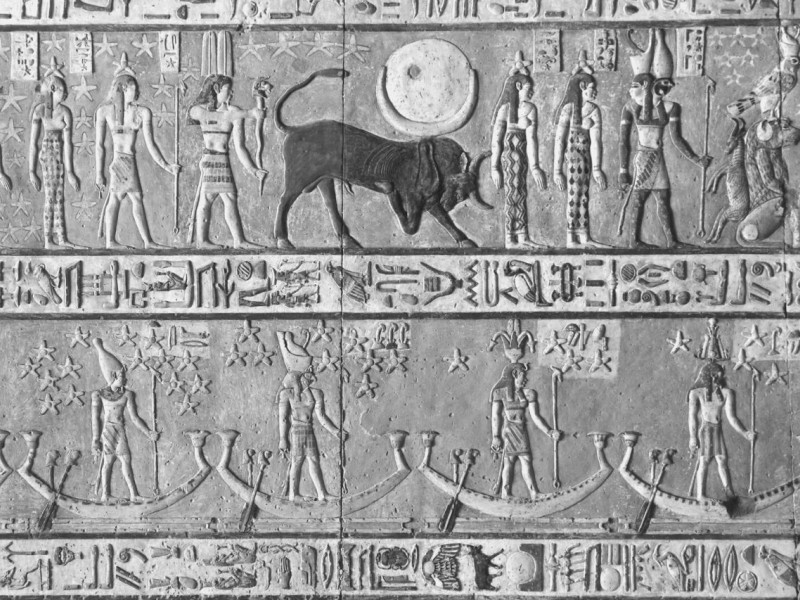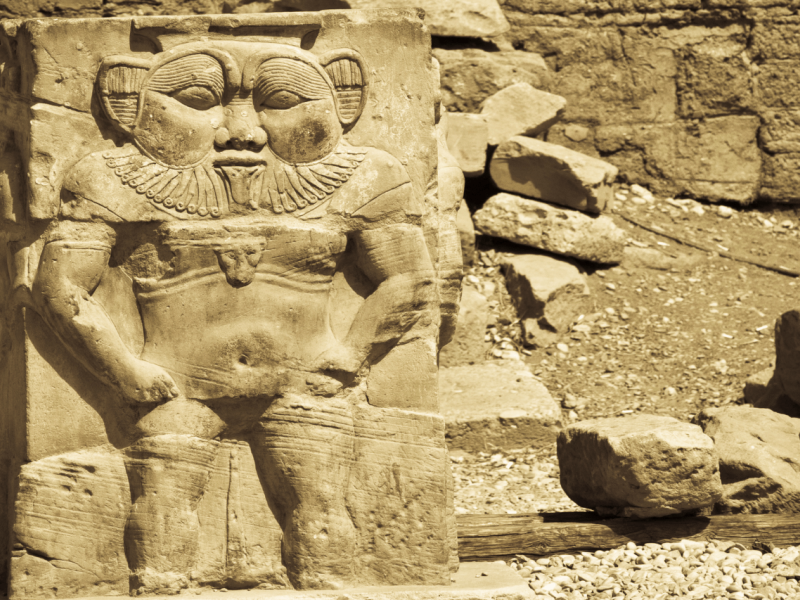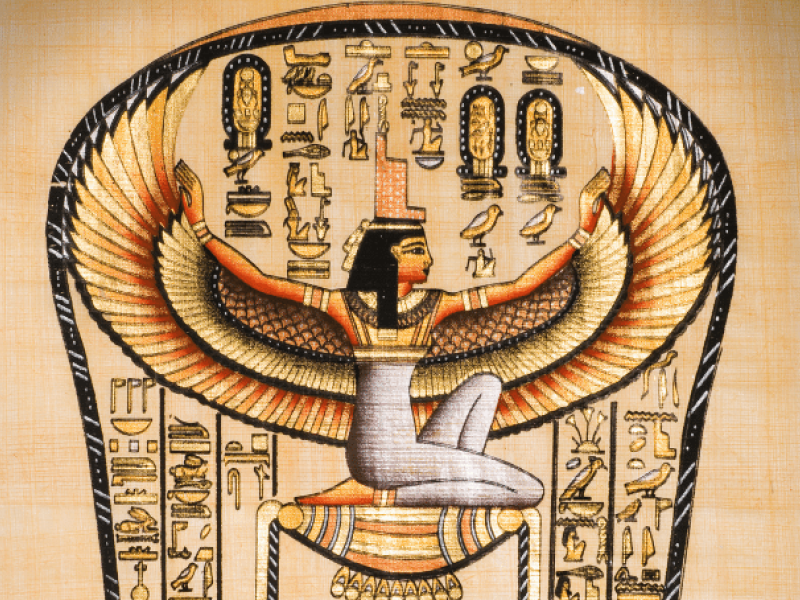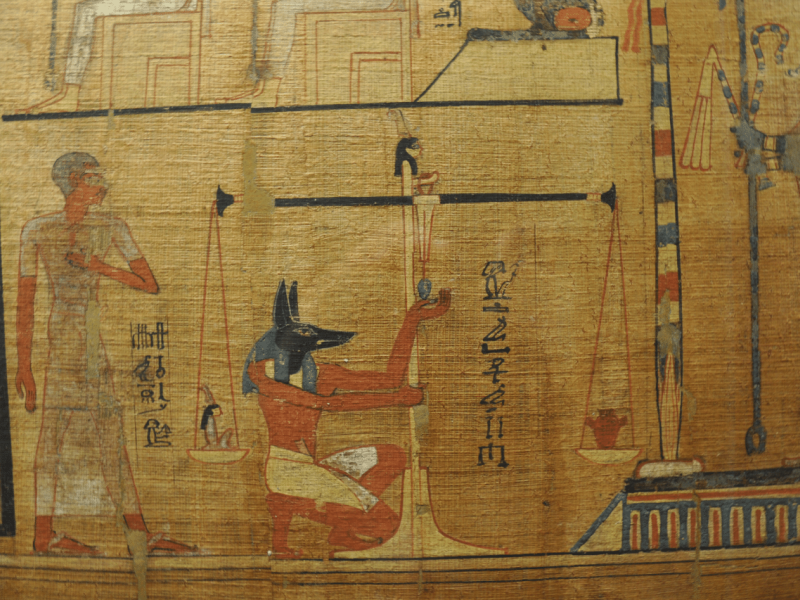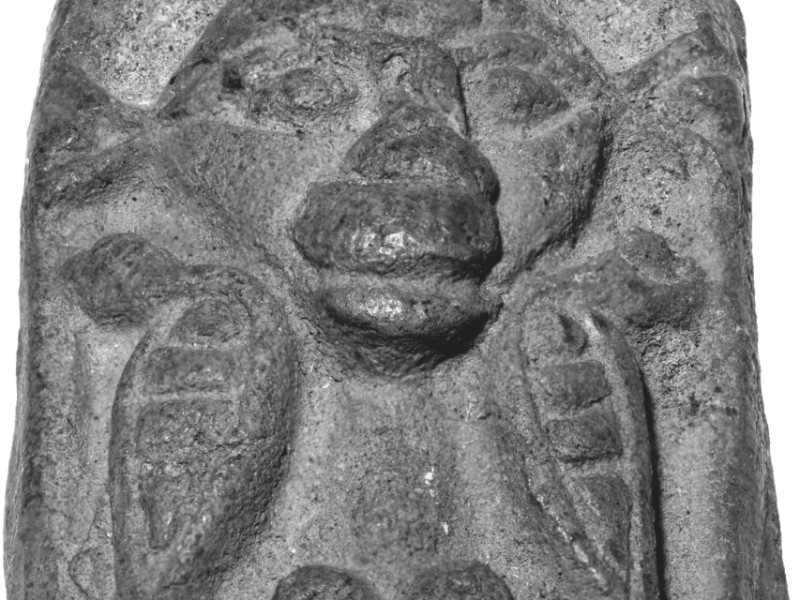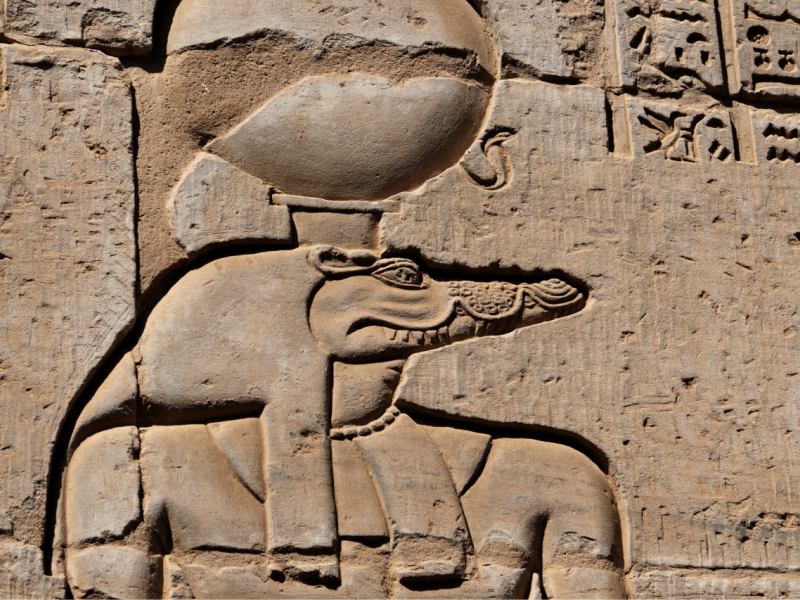Bastet: How This Lion-headed Goddess Became a Cat-headed Deity
Bastet was the ancient Egyptian goddess of cats, beauty, love, entertainment and pleasure. Also known as Bast, she was originally a lion-headed goddess who was aggressive and ferocious.
How did this transformation come about?
Read on to discover the origins of Bastet, her symbols, worship and relationship with the other gods of the ancient Egyptian pantheon.
Who Is Bastet in Egyptian Mythology, What Are Her Origins and Symbols?
Bastet was a goddess in the ancient Egyptian pantheon. She had several roles depending on the period and her worshippers. Initially, her adherents thought her to be a lioness with a female body. However, as the centuries passed she became an Egyptian cat goddess.
Origin of Bastet and Her Depiction in Ancient Egypt
The Egyptians began to worship Bastet in the third millennium BC. Her worshippers visualized her as a warrior, so they depicted her as a lioness. Bastet was worshipped as a residential deity in Memphis, the capital of Lower Egypt. However, her worship migrated to Bubastis, where she became a city deity.
The Egyptians associated her with the lionesses that lived and hunted in the Delta semi-deserts. In the early part of the 3rd millennium, lions occupied the area around the seasonal river, Wadi Tumilat. The Wadi Tumilat had lush vegetation which attracted several cattle herders, so the presence of these cattle served as food for the lions.
The Egyptians observed how the lionesses attacked the cattle in teams. The fierce nature and the aggression of the lionesses fascinated the Egyptians and they created a god to reflect the lionesses’ nature.
That was how the worship of Bastet came about, and she became the local god of the city of Per-Bastet, which meant House of Bastet, located in Lower Egypt. Her main role then was to protect the city, also known as Bubastis, and its king.
How the Depiction of Bastet Slowly Changed From a Lioness to a Cat
Bubastis was the capital of the Am-Khent region and was one of the choicest places in the Delta. The beauty of the city attracted people and helped to spread the worship of Bastet.
Between 945 to 717 BC, her worshippers began visualizing her as a cat. It should be noted that this was not a demotion in status because the ancient Egyptians regarded cats in high esteem.
Egyptians’ High Regard for Cats and How Bastet Was Symbolized by a Cat
Egyptians thought of cats as bringers of good luck, so they kept them in their houses. They also regarded cats as having two natures which intrigued them. The ancient Egyptians observed that cats could combine gentility, grace and fertility with ferocity and aggression. They regarded these two seemingly opposite characteristics as a feat of the gods.
Another thing that interested the ancient Egyptians was the ability of cats to kill mice and dangerous reptiles. Mice, rats and snakes represented death and danger in Egyptian society and mythology, so a cat’s ability to defeat these creatures gave it a god-like status in ancient Egypt.
Thus, they began revering cats in the same way they would revere gods, but did not worship them.
During this time, they began adding features of cats to their female gods. That was how Bastet’s representation changed from a lioness to the head of a cat. The Egyptians combined her warrior-like nature with her gentle and fertile characteristics, something that lionesses didn’t have.
Bastet’s followers also associated the motherly instincts and care of female cats with the goddess Bastet.
The Meaning of the Name Bastet
Egyptologists are not certain of the meaning of the name Bastet. The names of deities in ancient Egypt were secrets that only the members of the deity’s cult understood. The names were often euphemistic, referring to the members of the cult, so Bastet’s real meaning is not known.
Scholar Interpretations
However, modern scholars like Stephen Quirke have suggested certain meanings to the name. According to him, Bastet meant “She of the ointment jar.” He came to this conclusion by studying how her name was written in hieroglyphs. He observed that the Egyptians used the word that indicated an ointment jar in writing the name Bastet.
Coupled with the fact that her followers associated her with special ointments, Quirke decoded the meaning of her name. However, another scholar, James P. Allen, disagrees with Quirke. According to Allen, the name Bastet meant “she of Baset.” He didn’t translate the hieroglyph that indicated Bastet as meaning a jar.
Rather, he concluded that the hieroglyph represented the name of a place called Baset. Hence, his conclusion “she of Baset.” The place called Baset in Allen’s interpretation of the name of the goddess is uncertain. According to scholars, the word Alabaster might have its roots in Bastet.
The Description of the Bastet Temple and the Spread of Her Worship
By the fifth century BC, her adherents had constructed a temple in her honor in the middle of the city. The temple of the goddess was a sight to behold, according to the Greek historian Herodotus. Two channels from the river Nile are on both sides of the temple with each channel lined up with trees, giving the temple a beautiful exterior.
There was a stone wall that surrounded the temple with relief carvings on them. The shrine of the goddess Bastet was surrounded by tall trees, and in the shrine was the image of Bastet. The shape of the temple was square, with each side measuring about 660 feet.
The path to the entrance of the temple was decorated with stones and trees on each side. Inside the temple, scholars discovered mummified cats buried with their owners. The wealthy Egyptians whose cats passed away had them preserved through mummification, and over 300,000 cats were excavated in the Temple of Bastet, signifying how the Egyptians adored them.
Other Cat Cemeteries
There were other cat cemeteries in and around the city of Bubastis. Some archeologists discovered cat cemeteries in Beni Hasan in 1888. This was an indicator of how widespread the worship of Bastet, the cat goddess, had been. In 2018, a cat cemetery in Saqqara, another ancient Lower Egyptian city, was discovered by archaeologists.
The Relatives of Bastet
As was common in ancient Egyptian mythology, Bastet had relatives. Her father was the Sun god Ra and her mother was the goddess Isis. According to ancient mythology, Bastet married Ptah, the god of creation and rebirth. The two gave birth to Maahes, god of war with the head of a lion.
In some narrations, Bastet’s sister happened to be Sekhmet, but other narrations placed Sekhmet as the other half of Bastet. Some Egyptians believed that Bastet had two sides, the good and the ugly.
The good side was gentle, protective, caring and loving and was known as Bastet. The Egyptians depicted the good side, Bastet, as a cat to reflect its gentility.
The bad side, known as Sekhmet, was ferocious, aggressive, powerful and was depicted as a lioness. Some scholars also believe that Bastet and Sekhmet started off as different gods but were eventually merged into one.
Bastet also had half-brothers, Horus and Anhur. Horus, a god of war, shared a mother with Bastet while Anhur, also a god of war, shared a father with Bastet.
The Relationship Between Anubis and Bastet
Anubis and Bastet shared a very interesting story. Egyptians in the Old Kingdom described Bastet as the half-sister of Anubis, the god of death, as they both shared the same father, Ra.
Other myths had Anubis as the lover of Bastet. This myth became popular when Anubis was made the god of embalming and Bastet became the goddess of protective ointments.
Other Egyptians in the Old Kingdom considered Bastet as the mother of Anubis. However, this mother-son relationship changed when Nephthys, the goddess of ancient Egyptian religion, came into the picture.
Others also believed that Bastet had no relationship with Anubis. The changing statuses and relationships of gods were a common theme in ancient Egypt.
The Role of Bastet
The ancient Egyptians believed that Bastet accompanied her father, Ra, across the sky every day. Her duty was to protect her father as he dragged the sun across the sky.
Then when her father went to sleep, Bastet would become a cat and protect him from Apep. Apep was a demon responsible for chaos, whose physical appearance was a serpent.
Apep was the biggest rival of Ra and wouldn’t waste any opportunity to kill him. Thus, Bastet had to keep an eye on her father while he performed his duties or while he slept.
Bastet was also the guardian of homes, and her duties included keeping homes free of diseases that affect women and children. She also played a significant role in ensuring the successful delivery of children.
Bastet’s duties extended to the afterlife, where she served as a helper to the dead. She also protected her followers against evil spirits. Bastet was in charge of entertainment, which is why some depictions show her holding a sistrum in one hand. A sistrum was a musical instrument in ancient Egypt.
Bastet’s Power
Bastet wielded power that was depicted by her bust featuring an aegis. The aegis was a symbol of authority that was mostly worn around the neck and head. Bastet’s aegis depicted the head of a lioness to illustrate her role as protector and defender of the land against evil spirits and diseases.
The Depictions of Bastet and Their Meanings
As already discussed, Bastet was first depicted as a lioness before becoming a cat when Upper and Lower Egypt united. She was mostly shown standing in profile with her head facing the side. Most Egyptian gods were depicted with the heads of animals to distinguish them, and Bastet had the head of a cat.
Artists painted the skin of Bastet gold to reflect her divine nature, but her cat-like head was black. She wore a white dress with white straps attached to the aegis around the neck. The white dress signified her divinity and purity, which was common for most deities. She held a sistrum in her right hand, which represented entertainment.
Other scholars believe what she held was not a sistrum but a rattle. The rattle signified Bastet’s role as a deity in charge of mothers and children. Bastet had an ankh in her left hand, which was a symbol of life in Egyptian mythology. The ankh represented Bastet’s role in the afterlife as a helper of the dead.
Other Depictions
Other depictions also show her holding the aegis in her left hand. During the period of Lower Egypt, Bastet was depicted holding a papyrus in her left hand. This signified her role as the deity of Lower Egypt and its guardian.
As the god of cats, she was sometimes represented by a full-grown female cat, which is a common Bastet statue to this day.
Other Gods Associated With Bastet
The Egyptians associated Bastet with the god Mau, who was a divine cat who was a part of Ra, the sun god. Mau had the powers of Ra and was an active force during creation. Many Egyptian paintings depict Mau fighting the serpent god, Apep. Along with Bastet, Mau helped to protect the sun god as he journeyed across the sky.
The cat deity also served as the protector of the tree of life.
Another deity linked to Bastet is the feline goddess Mafdet. Mafdet also fought alongside Bastet and Mau to defend Ra against Apep, and was the goddess of justice and protector against snakes and scorpions.
After protecting Ra during his daily voyage, Mafdet would spend the rest of the night hunting. Her role included ensuring that the dawn came everyday. All these feline gods were closely linked and worked with Bastet, though their roles differed slightly when it came to defending Ra.
The Festivals of Bastet
The festivals that commemorated Bastet were one of the most popular in ancient Egypt. The festivals were organized in April and May in the city that championed its worship, Bubastis.
The names of some of the festivals included Procession of Bastet, Bastet Appears Before Ra, and Bastet Protects The Two Lands. Every Egyptian looked forward to the festival due to its color and entertainment.
The people who partook in these festivals were mostly adult males and females. On the way to Bubastis, the women would break into songs and dance their hearts out. The men would play flutes to accompany the women’s singing and dancing. Participants who came from far away would stop at every city along the journey to make merry.
The women participants would lift up their garments and jeer at the other women in the city. During the festival, the people made numerous sacrifices to the goddess Bastet. There was a lot of alcohol present and the people drank to their fill.
In fact, the alcohol consumed during this festival superseded the yearly alcohol consumption amount.
Reason for Drinking
One reason for the excessive drinking was that Bastet needed to be pacified with a feast of drunkenness. Scholars traced the Bastet festival to the New Kingdom using the discovered statue of Nefer-ka, a Sekhmet priest. Inscription on Nefer-ka’s statue suggests that the king was present and gave his blessings to the festival. The king also commanded the great sacrifices and oversaw them.
Bastet Titles
Bastet, also known as Bast, had several titles, with each title denoting her role in Egyptian mythology. One of her many titles was Lady of Dread to signify her fearsome nature. She was also titled Lady of Slaughter, which denoted her merciless nature on her enemies.
Bastet also bore the title Goddess of the Rising Sun, indicating her role in protecting Ra. Other titles include Lady of the East, representing her role in keeping the Eastern Delta safe, Goddess of the Moon because she was the eye of the moon, and the Sacred and All-Seeing Eye.
The Greeks also referred to her as the Soul of Isis.
Summary
In this article, we covered a lot of ground on the origin, worship and role of Bastet in the Egyptian pantheon.
Here is a summary of what we’ve discussed so far:
Bastet originated from Bubastis where she was the protector of the land and the king.
Initially, the Egyptians portrayed her as a woman with a lion head after the lions in the region.
As her worship spread across the land her figure changed from a lion-headed to a cat-headed lady.
Her relatives included Ra, Sekhmet, and her husband Ptah.
The Egyptians portrayed her holding a sistrum in one hand and an ankh in the other.
Her role included protecting the god Ra as he made his way through the sky.
Her temple was located in Bubastis, Lower Egypt, where her followers held an annual festival in her honor.
The festival was characterized by excessive drinking, singing, and dancing with great sacrifices.
Bastet was one of the most popular gods of the Egyptian pantheon, and her worship and festival attracted thousands as it was characterized by lots of entertainment and revelry. Many ancient Egyptian mothers adored her due to the role she played in helping them deliver safely, and today her legacy lives on as she is depicted in numerous movies and video games.

